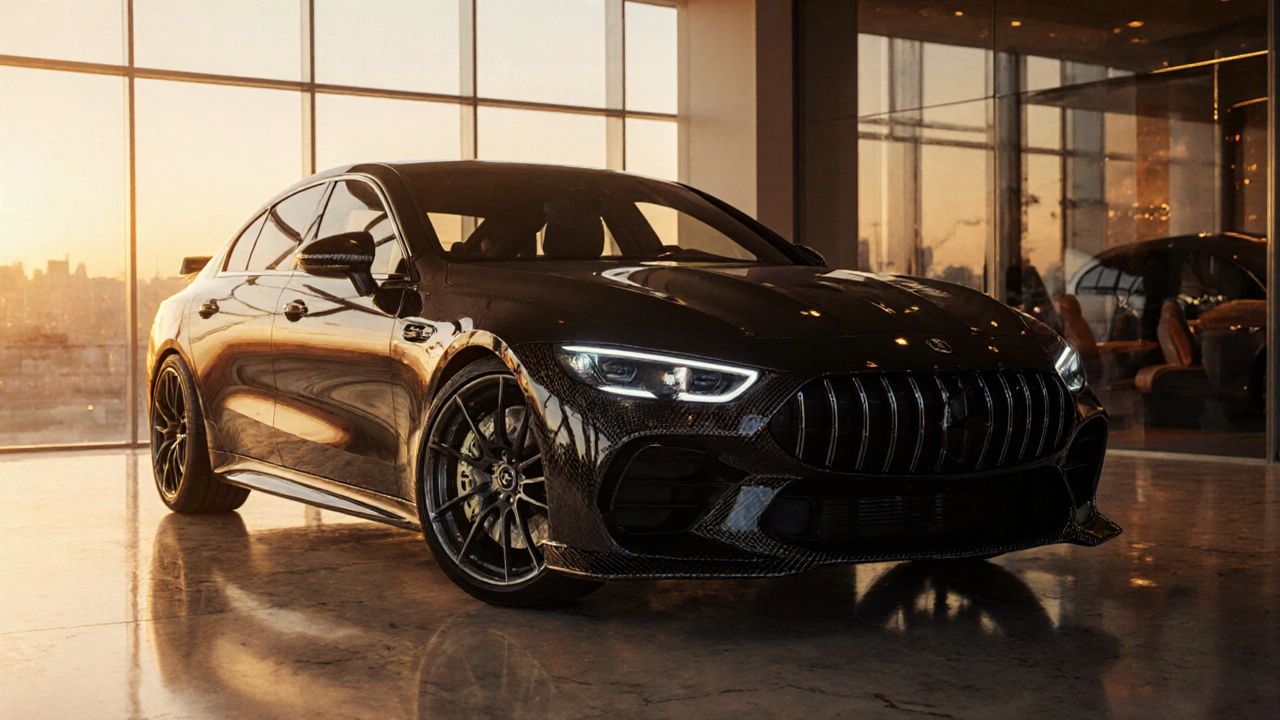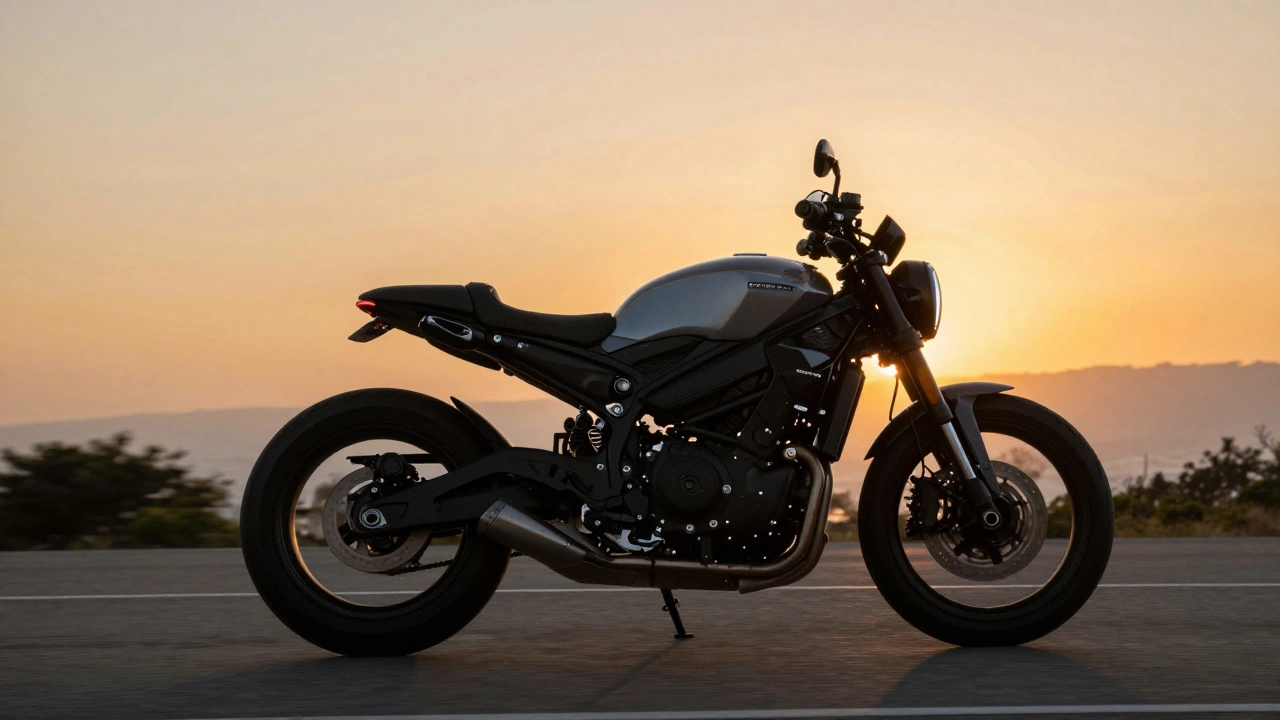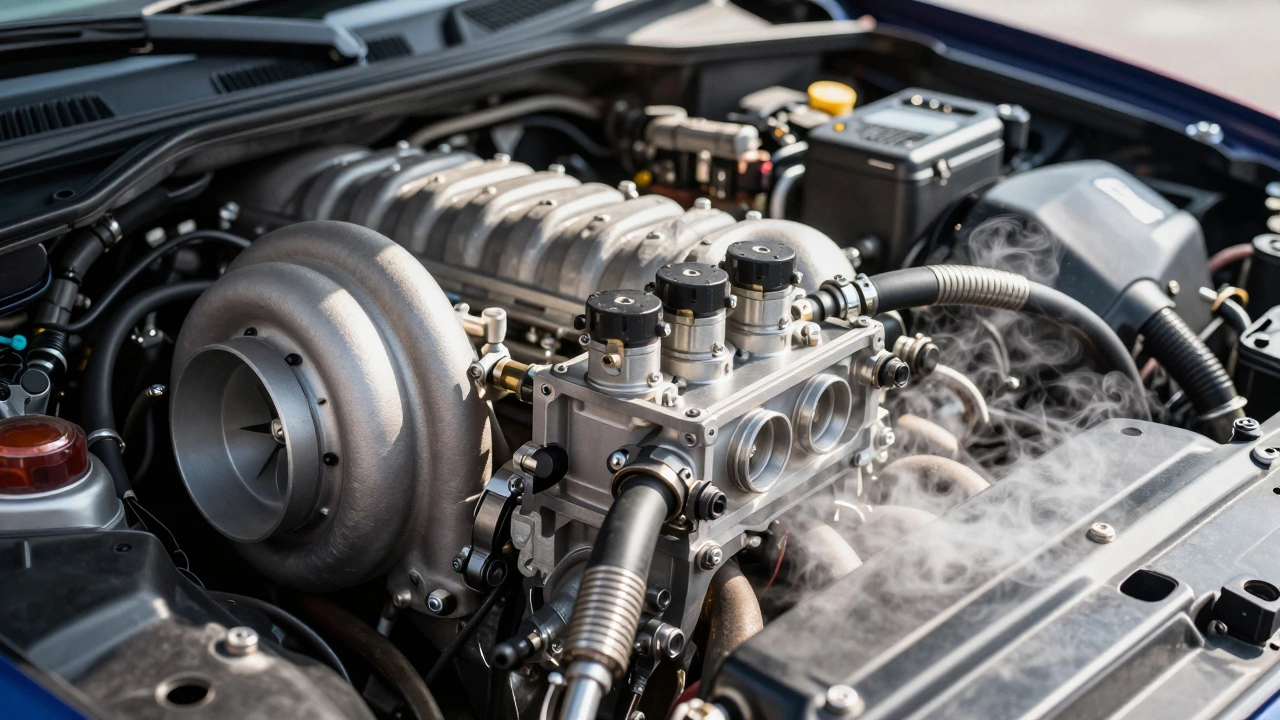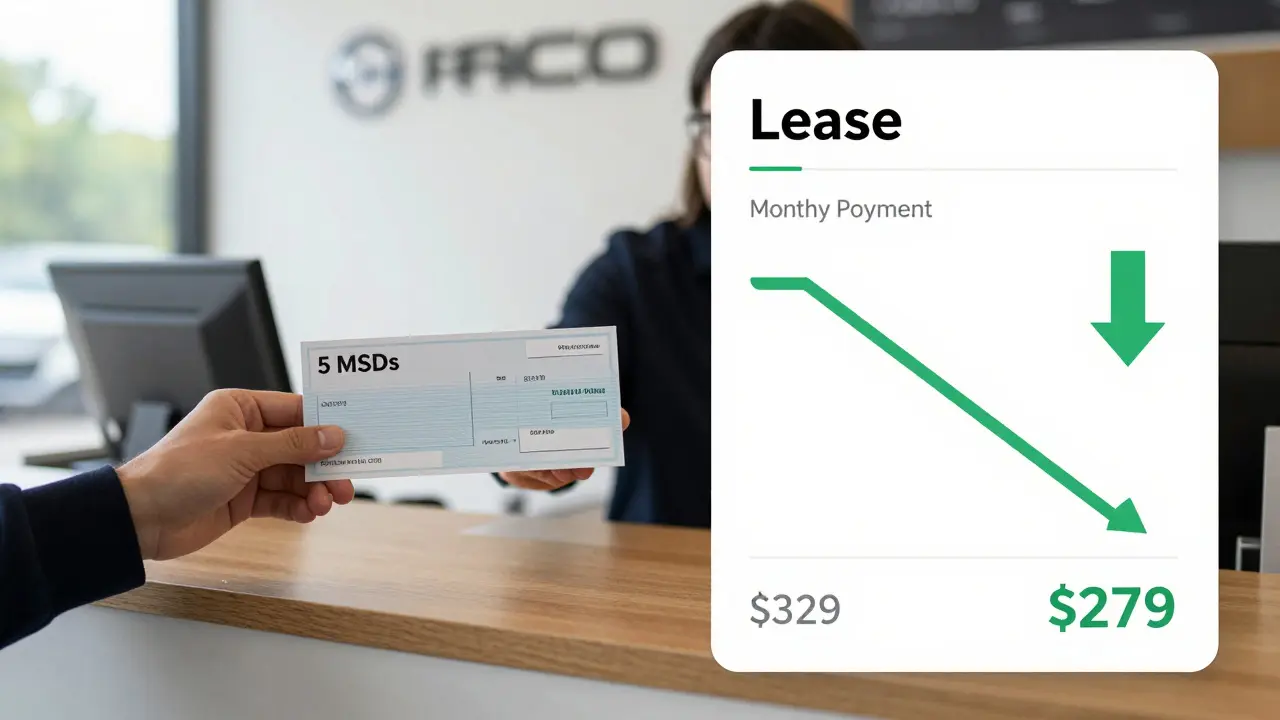Luxury Car Part Performance Calculator
Performance & Cost Analysis
When you hear the term luxury car parts, you probably picture glossy carbon‑fiber spoilers, hand‑stitched leather seats, and brakes that can stop a supercar in a blink. But what actually sets these components apart from the mass‑market equivalents? Below we break down the materials, engineering, design philosophy, and buying considerations that turn ordinary parts into high‑end statements.
Key Takeaways
- Luxury parts use exotic materials like carbon fiber, titanium, and fine leather to boost performance and prestige.
- Precision engineering and hand‑assembly are common, leading to tighter tolerances and longer life.
- Design focuses on aesthetics as much as function, often reflecting brand heritage.
- Price reflects R&D, low‑volume production, and brand cachet-not just raw material cost.
- Buying wisely means matching parts to your driving goals, budget, and maintenance willingness.
Materials That Matter
Carbon Fiber is a staple in luxury performance parts. Its high strength‑to‑weight ratio lets manufacturers shave off kilos without compromising rigidity. A carbon‑fiber front splitter can cut drag by up to 8% compared to a standard fiberglass version, according to a 2023 FIA aerodynamic study.
Another premium material is Titanium. Used for exhaust systems and fasteners, titanium resists corrosion and can endure temperatures above 1,200 °C, far beyond steel’s limit. That heat tolerance lets exhaust gases flow smoother, boosting horsepower by roughly 3‑5% in tested V8 engines.
When it comes to interiors, Premium Leather isn’t just soft; it’s engineered for durability. Full‑grain leather with a protective nanocoating resists staining and UV fade, extending a seat’s pristine look for over 100,000 miles.
Engineering Precision & Performance
Luxury brakes often feature Ceramic Brakes. These discs dissipate heat faster, reducing brake fade during repeated hard stops. In a 2024 track test on a German sports sedan, ceramic brakes trimmed lap times by 0.7 seconds versus conventional cast‑iron units.
Adaptive suspension systems, like those found on top‑tier models, use Electronically Controlled Dampers. Sensors read road surface and driver input 1,000 times per second, automatically adjusting stiffness for comfort or grip. The result is a 20% reduction in body roll compared to a standard coil‑over setup.
High‑performance engines in the luxury segment often incorporate Hybrid Powertrains. By pairing a turbocharged V6 with a 48‑volt electric motor, manufacturers achieve a 15% boost in torque while keeping emissions under European Euro7 limits.
Design, Aesthetics, and Brand DNA
Every luxury brand has a visual signature. For example, Aluminium Trim on BMW’s interior panels signals a blend of sportiness and modernity. Likewise, Maserati’s iconic trident grille isn’t just for looks; it channels airflow to cool the engine more efficiently.
Customization is another key differentiator. Manufacturers offer bespoke color palettes, hand‑stitched embroidery, and even carbon‑fiber inlays for dashboards. In 2022, a limited‑edition Lamborghini model allowed owners to select from 1,200 unique interior configurations, turning the cabin into a personal art piece.
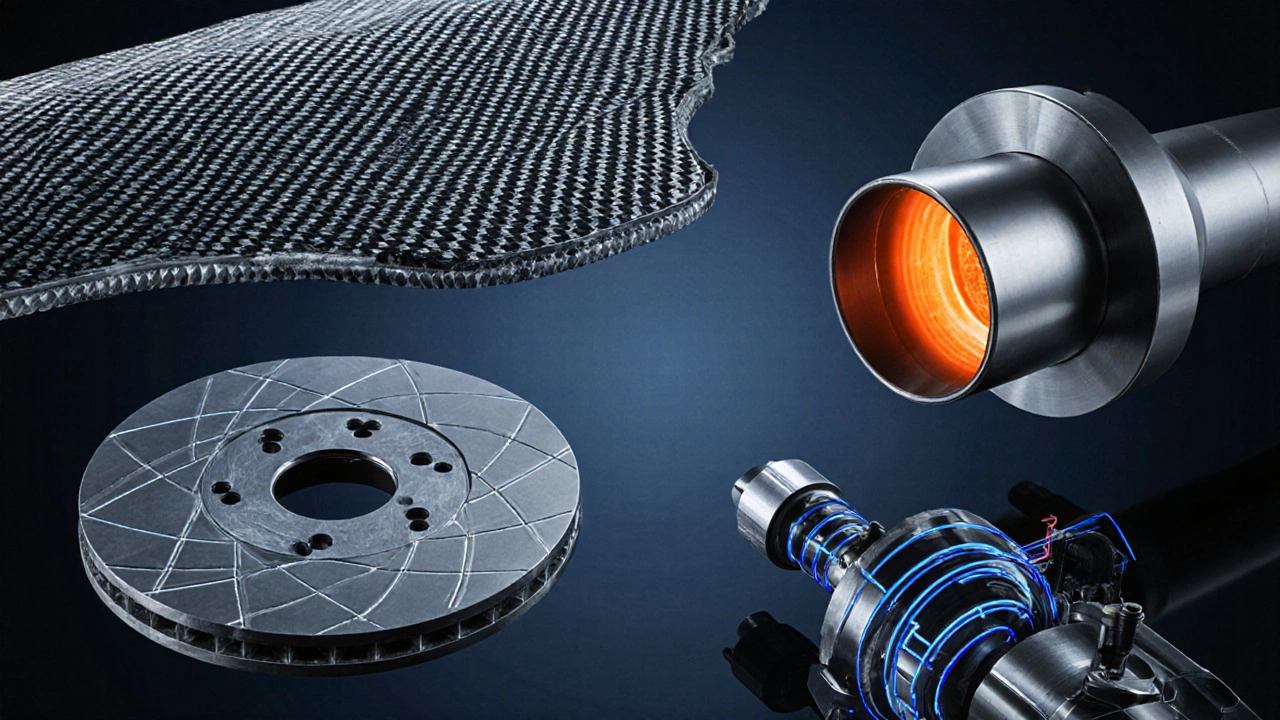
Brand Heritage and Exclusivity
Luxury isn’t only about specs; it’s about story. Parts that carry a storied name-think Rolls‑Royce Bespoke Leather-offer an intangible value that collectors pay for. A 2025 auction of a classic AMG‑tuned Mercedes S‑Class fetched $1.2million, largely because the original hand‑crafted components remained untouched.
Low‑volume production amplifies that exclusivity. If a component is made in a run of fewer than 500 units, owners often receive a numbered plaque, reinforcing the perception of rarity.
Cost vs. Value: Why the Price Tag Is High
It’s easy to assume the high price comes solely from exotic materials, but the real cost drivers include:
- R&D Investment: Developing a new ceramic brake system can cost upwards of $30million, which manufacturers amortize across a limited number of units.
- Hand Assembly: Skilled technicians spend 2‑3 hours installing a carbon‑fiber hood, compared to 30 minutes for a stamped steel one.
- Quality Assurance: Each luxury part undergoes 10+ inspection points, including ultrasonic testing and finite‑element analysis.
- Brand Premium: The name‑value attached to a maker like Ferrari or Bentley adds a markup that can exceed 40% of the base cost.
When you factor in longer service intervals-ceramic brakes can last 100,000 miles versus 30,000 for standard ones-the total cost of ownership often evens out over the vehicle’s life.
Buying Guide: Picking the Right Luxury Parts for You
Before splurging on a carbon‑fiber spoiler, ask yourself these questions:
- Driving Style: Are you chasing track times or cruising on highways? Performance‑focused parts (ceramic brakes, adaptive suspension) matter more for the former.
- Budget Constraints: Set a clear ceiling. Remember that installation can add 15‑25% to the sticker price.
- Maintenance Commitment: Luxury components often require specialist servicing. Verify if local garages are certified.
- Resale Impact: Some upgrades boost resale value (e.g., factory‑issued carbon‑fiber wheels), while others are purely aesthetic.
Here’s a quick decision matrix to help you prioritize:
| Component | Luxury Material | Performance Gain | Typical Price Range (USD) |
|---|---|---|---|
| Brake Discs | Ceramic | +5% stopping power, less fade | $2,500 - $5,000 |
| Exhaust | Titanium | +3% horsepower, weight saved | $3,200 - $6,500 |
| Spoiler | Carbon Fiber | Improved downforce, 5% drag reduction | $1,800 - $4,000 |
| Upholstery | Full‑Grain Leather | Enhanced comfort, resale appeal | $4,000 - $9,000 |
| Suspension | Electronically Controlled Dampers | 20% less body roll, adaptive ride | $6,000 - $12,000 |
Use the matrix as a starting point, then dive deeper into each part’s specs to see if the gains align with your expectations.
Maintenance Tips for Keeping Luxury Parts at Their Best
Even the most exclusive components need care. Follow these simple habits:
- Regular Cleaning: Use pH‑balanced cleaners on carbon‑fiber exteriors to avoid micro‑scratches.
- Temperature Monitoring: Ceramic brakes can develop micro‑cracks if they overheat repeatedly; schedule a visual inspection after intense track days.
- Lubrication: Titanium fasteners benefit from a high‑temperature synthetic grease, extending bolt life by up to 30%.
- Professional Servicing: Trust factory‑authorized shops for calibrating adaptive suspensions-DIY tweaks can void warranties.
Adhering to these practices helps maintain performance and preserves the resale value that makes luxury parts worthwhile.
Future Trends: Where Luxury Car Parts Are Heading
Looking ahead to 2026 and beyond, three trends are shaping the next generation of premium components:
- Smart Materials: Shape‑memory alloys that adjust stiffness on the fly are being tested for adaptive chassis.
- 3D‑Printed Metal: High‑precision additive manufacturing allows bespoke engine blocks with internal cooling channels.
- Eco‑Luxury: Recycled carbon fiber and bio‑leather are gaining traction, offering sustainability without sacrificing status.
These innovations promise even greater performance, personalization, and alignment with eco‑conscious buyers.

Frequently Asked Questions
Do luxury car parts actually improve performance, or are they just for looks?
Many luxury components deliver measurable gains. Ceramic brakes reduce fade, carbon‑fiber panels cut weight, and adaptive suspensions improve handling. However, some upgrades-like bespoke interior trims-are primarily aesthetic.
How much more should I expect to pay for a luxury part versus a standard one?
Pricing varies, but a rule of thumb is 2‑4× the cost of the standard counterpart. A regular steel brake set might be $800, while a ceramic upgrade can exceed $3,000.
Are luxury parts covered by the same warranty as the original vehicle?
Most manufacturers offer a separate warranty-usually 3‑5years or a mileage cap-specifically for aftermarket luxury components. Always check the paperwork before installation.
Can I install luxury parts myself, or do I need a specialist?
Some upgrades, like carbon‑fiber wing mirrors, can be DIY for confident owners. High‑precision parts-especially brakes and suspensions-require factory‑trained technicians to ensure safety and warranty compliance.
Do luxury upgrades affect my insurance premium?
Yes, insurers often view high‑value modifications as increased risk. Provide documentation of the parts and their installation to get an accurate quote.
